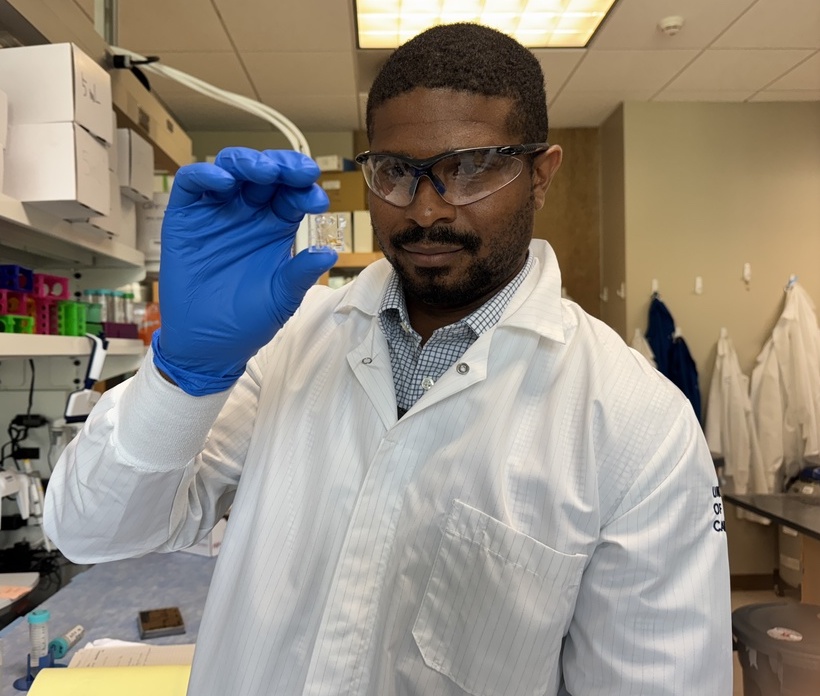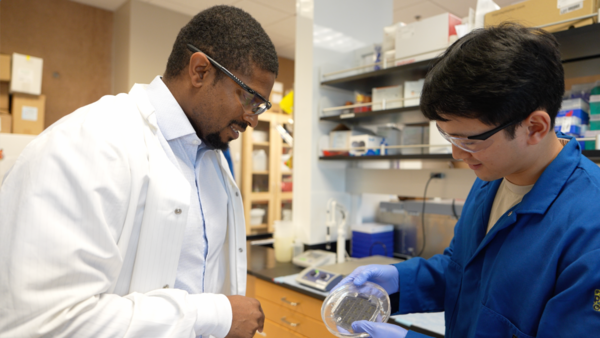3D Stem Cell Engineering That Could Change the World

The Lab Beat
Oct. 1, 2025 - Quinton Smith was named one of the “top 10 scientists on the cusp of changing the world” by Popular Science in 2023 because of his success at 3D stem cell engineering. His dream? To be able to 3D print organs like the human liver so patients will no longer need transplants.
“I think it's a little bit science fiction,” said Smith, who was inspired by science fiction to become a biomolecular engineer. He is now an assistant professor of chemical and biomolecular engineering at UC Irvine. “You can actually see different shows using 3D printing — Westworld is one of my favorite shows. But I think that’s feasible. We're slowly getting into that possibility.”
Smith is already doing it on a small scale in his UCI lab which specializes in creating mini livers. His lab can take any cell from a patient and give it a cocktail of chemical factors that reprograms the cell to become another cell type on the body. The lab then configurates those new cells into mini human organs-on-a-chip about the size of a quarter.
Ninety percent of drugs that work in mice fail in humans, so he is striving to develop a more viable and affordable way to test drugs through these organs-on-a-chip. "I envision a world where maybe we don't need to take drugs for certain conditions,” he said, “but we can use the cell as the therapy." His team has tested the effects of nicotine on blood vessels and drugs like acetaminophen on liver cells.

Smith has also been able to create a part of the body scientists have long struggled with — blood vessels. Nearly all tissues are less than the width of a human hair away from a functional blood vessel. “We consider that to be the highway of life,” said Smith. “Blood vessels are responsible for delivering nutrients, oxygen and removing waste. Using stem cells for regenerative medicine really hinges on the ability to deliver functional blood vessels.”
As an engineer, Smith found inspiration from semiconductors to create vessels-on-a-chip. He imitated the design of transistors on cell phones to print very small cellular arenas where cells self-assemble into blood vessels. “What we do is give the kind of initial conditions that allow the cells to do what they naturally do in the body and that's not easy,” Smith said. “A lot of the ingenuity in our approaches is trying to reverse engineer the human body.”
His lab also builds mini tissues via a 3D bioprinter which configures cells in a controlled architecture, such as that of the liver which he describes as having “a beautiful, hexagonal pattern.” Smith’s vision is to one day — he says perhaps 15 years from now — be able to use a patient’s own cells to 3D print a new liver that can be transplanted back into the person.
“We work with about a million cells. Our liver has 200 billion cells so that's quite a scale up process to achieve,” Smith said. “I think the little principles that we're building upon can definitely be translated for scale up applications. We have to start somewhere. I think the promise of stem cell engineering is incredible.”
- Natalie Tso
(Listen to a 4-minute podcast featuring Quinton Smith and his UCI lab on The Lab Beat.)

